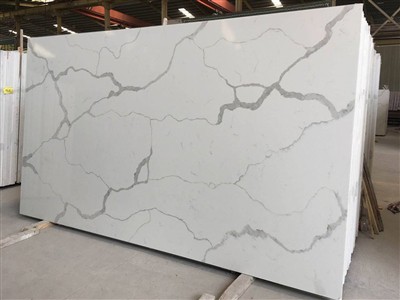How does the mineral composition affect marble's appearance
Jun 24, 2025
Leave a message
Marble's timeless beauty and unique visual appeal are largely shaped by its mineral composition. As a metamorphic rock formed from limestone subjected to high pressure and heat, marble's mineral content determines everything from its color and veining to its texture and translucency.
At XSE, with decades of experience supplying marble for architectural, decorative, and sculptural use, we understand how even subtle changes in mineral makeup can significantly impact the final appearance of a marble slab.
1. Calcite – The Primary Mineral Behind Classic White Marble
Calcite (CaCO₃) is the dominant mineral in most marble.
It gives marble its clean white or light appearance and characteristic softness and sheen.
Pure calcite marble (like Carrara or Statuario) appears mostly white or pale grey, often with delicate veining.
✅ XSE supplies high-purity white marble, perfect for luxury interiors, sculptures, and countertops.
2. Impurities Create Color and Veining
Marble often contains trace minerals and inclusions, which lead to its variety of colors and dramatic patterns.
Iron oxides: Add yellow, brown, or reddish hues.
Graphite or carbon: Introduce grey or black tones.
Chlorite or serpentine: Responsible for green shades (as seen in Verde Alpi or Verde Guatemala).
Quartz, pyrite, or mica: Add shimmer or sparkle, especially visible under light.
✅ At XSE, we match clients with the exact marble tones they need-whether warm golden veins or bold black streaks-for custom design projects.
3. Crystalline Structure Influences Reflectivity and Texture
The size and clarity of the calcite crystals in marble also affect how the stone reflects light:
Fine-grained marble has a smooth, uniform appearance-ideal for carvings and subtle interiors.
Coarse-grained marble tends to have a glittery or luminous effect, favored in large-format slabs for flooring and wall cladding.
The way crystals interlock also contributes to the stone's strength and polishability.
✅ XSE offers both fine and coarse-grained marble depending on the project's visual and structural needs.
4. Veining Patterns Are Mineral Traces in Motion
Veins in marble are the result of mineral intrusions or fractures that filled with different materials during the stone's formation.
Linear, flowing, or book-matched veining often reflects geological stress and movement.
Multi-colored veins are due to complex layering of minerals, making each slab a one-of-a-kind artwork.
✅ Our team at XSE carefully selects and cuts marble slabs to highlight these natural veining patterns for the most aesthetic impact.
Final Words from XSE
At XSE, we know that marble's beauty is deeply rooted in its geology. Understanding mineral composition not only enhances your appreciation of this natural stone but also helps in selecting the right material for each design vision-whether you're looking for classic white elegance or dramatic color contrast.
📩 Interested in unique marble slabs with stunning natural compositions? Contact XSE today for expert advice, sample viewing, and global stone supply tailored to your project needs.

